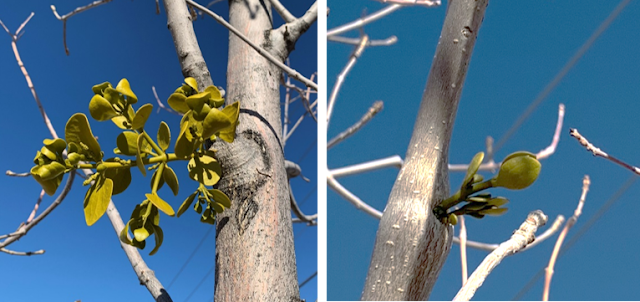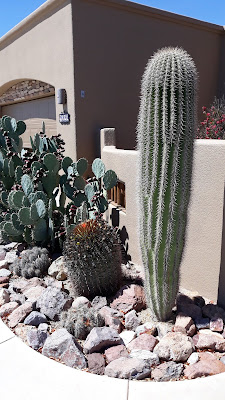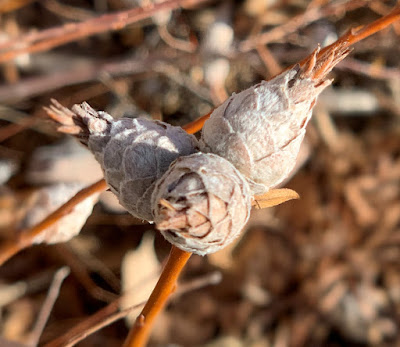Mistletoe Ranges are Changing; so are Recommendations on What to do About It

Southwest Yard and Garden By Dr. Marisa Thompson SEE HIGHLIGHTED SECTION BELOW FOR UPDATE FROM March 2024! A broadleaf mistletoe infects a young ash tree in two different parts of the same canopy on Indian School Road in Albuquerque. The smaller sprout (right) is tiny, but the swollen branch is a likely sign that the infection is deeper than it looks and may be permeating throughout the entire trunk. Photo credits M. Thompson. Question: There’s mixed advice out there on how to control mistletoe. What do you recommend? - Question submitted via Sandoval County Extension Agent Lynda Garvin Answer: For me, the control approach depends mainly on the kind of tree, how bad the infestation is, and if the mistletoe is reasonably reachable. In a nutshell: there are many species of mistletoe (over 1,500 worldwide) and, for the most part, each one is species-specific. That is, mistletoe on your juniper will never




